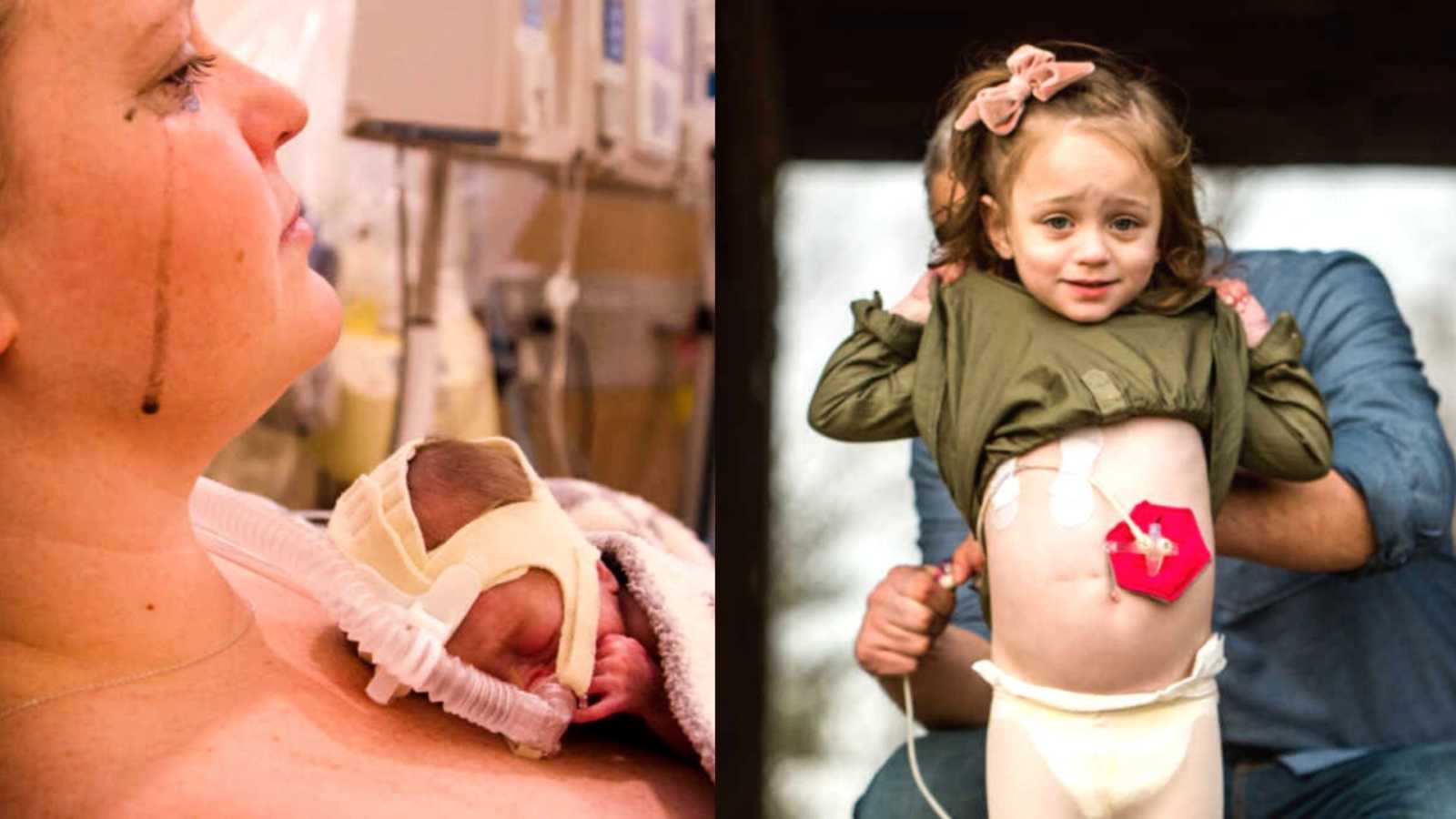“John and I met in college that fateful night when he re-filled my solo cup with fresh Jungle Juice and asked me for my AOL Instant Messenger screen name. I was still technically a teenager. We have been together for nearly two decades. We grew up together, and as cliché as it sounds, we are each other’s best friends. We’ve come a long way from our 680-square foot apartment, sharing a car, and living off one salary while we paid for my graduate school.
I was teaching special education Kindergarten while John proposed to me with all the students in my class. The kids held up signs that said, ‘Miss Cox, can you teach us to say Mrs. Durfee?’ After 7 years of being together, we got married at the Jersey shore, barefoot in the sand, surrounded by our closest family and friends. I walked down the aisle to these words:
‘I’ve got an angel / She doesn’t wear any wings / She wears a heart that could melt my own / She wears a smile that could make me want to sing / She gives me presents / With her presence alone / She gives me everything I could wish for / She gives me kisses on the lips just for coming home.’ – Jack Johnson, ‘Angel’
We spent the next few years traveling, hiking, photographing, and buying our home in the country across the street from a river. We were ready to grow our family, but starting a family did not come easy for us. Our marriagewas tested beyond anything I could have ever imagined.
Our story is about the product of our 3-year journey of infertility treatment, 5 failed cycles of IUI, 1 IVF followed by a miscarriage, and our final, successful IVF. We had less than a 5% chance of getting pregnant when we started, and that percentage dwindled with each birthday I had while we tried. I wish I could say fertility treatments went as well as they could, given how tough it was, but I had weird reactions to all the hormones. I had pregnancy and morning sickness symptoms, and lived in a constant state of nausea. The doctors saying it was the worst they’d ever seen. I survived on a steady, well-rounded diet of ginger ale, saltines, and any cheese and pasta-based food I could get my hands on. After over 1,000 days, countless injections, constant nausea, the loss of a baby, and immeasurable heartbreak, I was finally pregnant.
I wanted to be a mother more than anything else in the world and at any cost. Naively, I thought the worst was behind us.
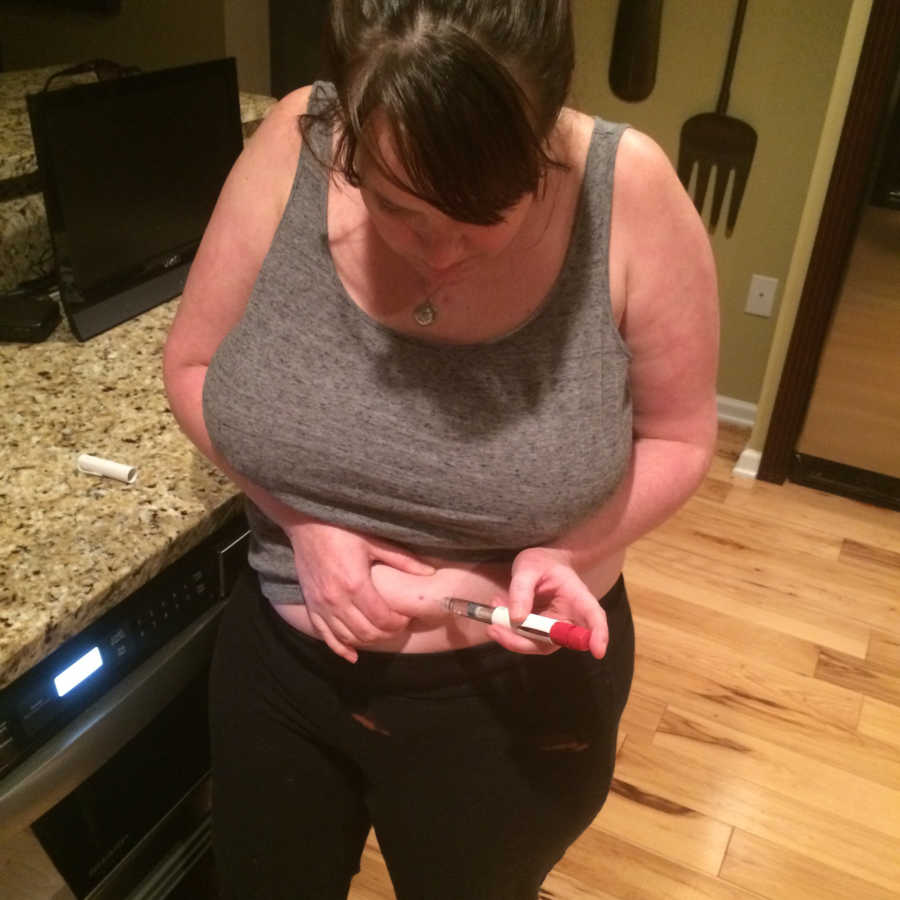
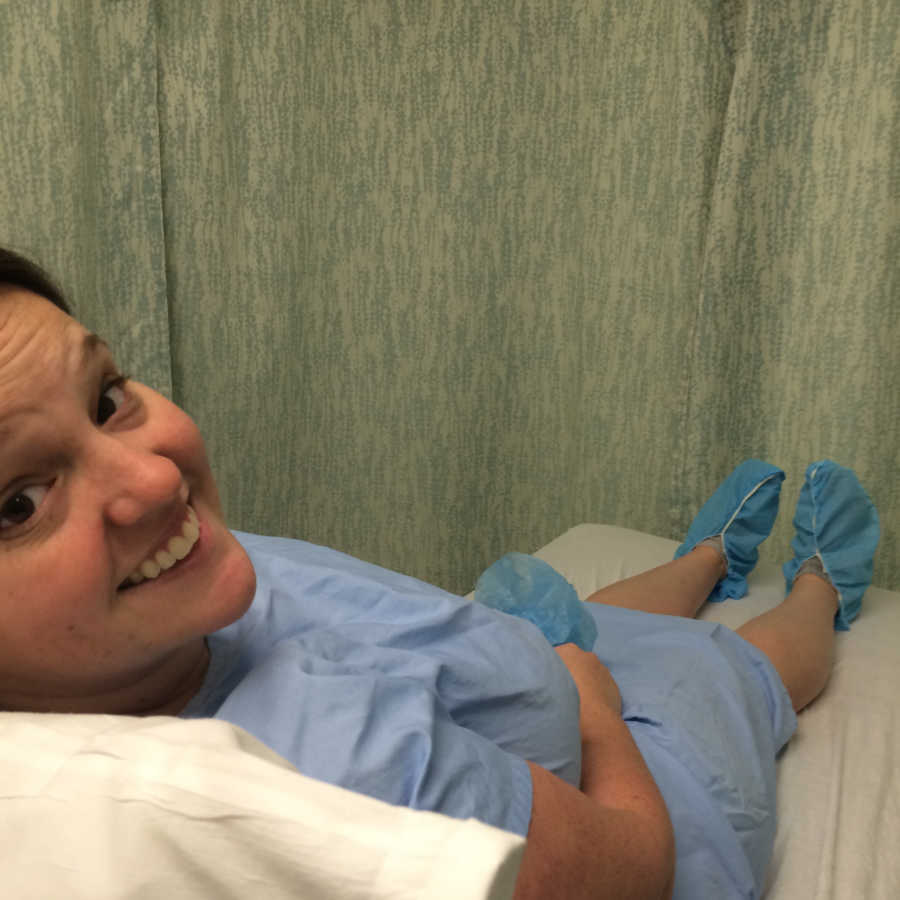
Our story is about the mother who endured hyperemesis gravidarum, weeks of high blood pressure, doing everything she could to hold on as long as possible. My pregnancy was…eventful. After the typical battery of 12-week tests, we realized something was wrong. There was restricted blood flow to the placenta and abnormal levels of PAPP-A. IUGR causing the baby to grow at an extremely slow rate. I was labeled ‘high risk’ and was monitored weekly. The baby ‘growing’ inside of me continued to measure in at less than 1%. I was at extreme risk for preeclampsia and having a premature baby. The pregnancy was hard. Really hard. I had Constant vomiting, nausea, fatigue, and depression. At 21 weeks, I had blood pressure levels made functioning as a human difficult, let alone carrying another human in my womb. At 23 weeks, I had an initial preeclampsia diagnosis and strict bed rest. At 26 weeks, I was admitted to the hospital with severe preeclampsia, difficulty breathing, blurred vision, and organs began to fail.
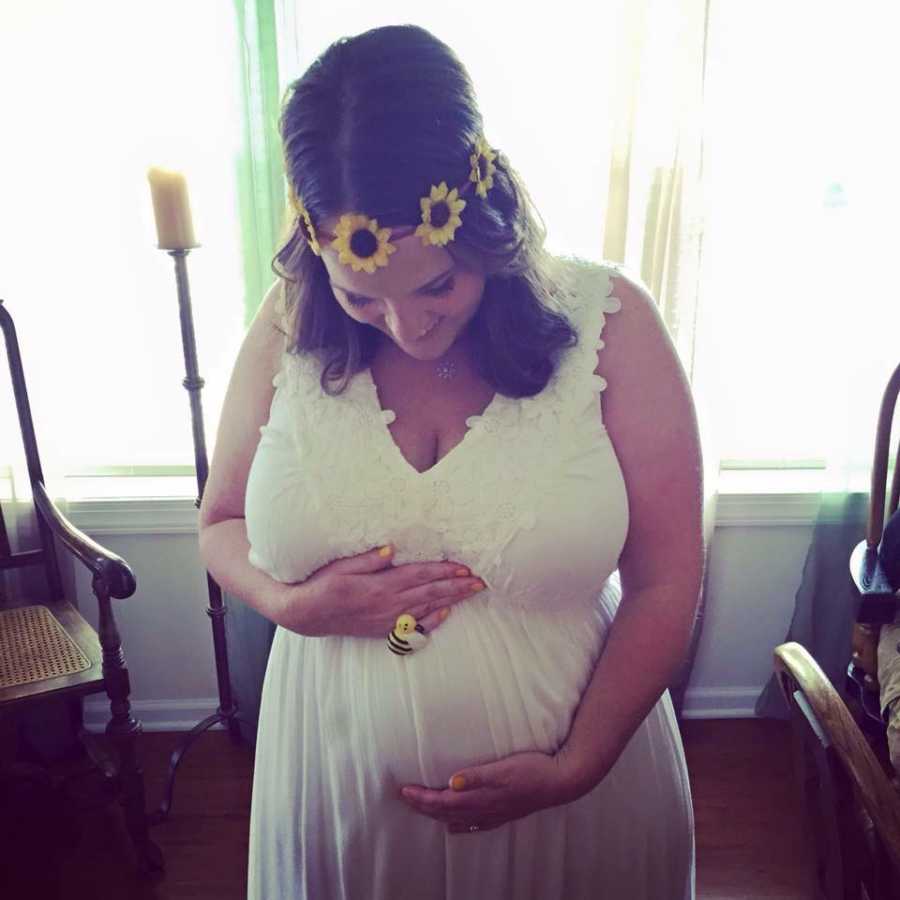
4 months too soon, I learned I was going to have to deliver my baby.
‘If you don’t deliver your baby tonight, you could die. If we don’t take the baby out now, she could die. But if we do deliver tonight, there’s no guarantee she’ll survive.’ You could cut the silence in the room with a knife. What was supposed to be one of the happiest days of our life, quickly turned frightening.
Our baby spent 100+ days in the NICU, fighting every day through NEC, weight-gain problems, feeding issues, vomiting, and surgery. She was brought into the world via an emergency delivery, to save both of our lives. I delivered her 14 weeks too soon because my pregnant body was failing, and it was unsafe for her to ‘bake’ any longer. Instead of the dreamy moment I’d envisioned when she’d be placed on my chest and we’d stare into each other’s eyes, she was poured over by nurses, hooked up to machines, checked, poked, prodded, and raced out of the room straight to the Neonatal Intensive Care Unit (NICU). I wouldn’t see her for 24 hours, I wouldn’t hold her for a week, and I wouldn’t bring her home for over 4 (very long) months. Heart-wrenching doesn’t do justice to what I felt. I gave birth to a 26-week-old, 1 pound, 8-ounce, micro-preemie miracle.
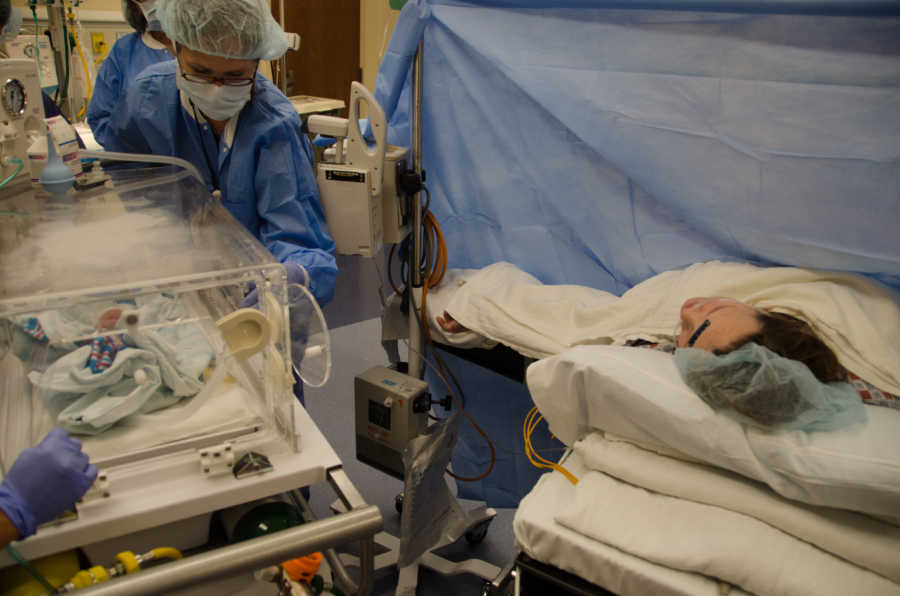
Our journey through the NICU was a rocky one, and it has left my daughter with a chronic illness she will deal with for the rest of her life. I can painfully recall one of our scariest days in the NICU.
The NICU called and said we needed to come in right away. Addie wasn’t doing well and we needed to pack an overnight bag. When we got to the NICU, there was a crowd in her corner and the cover was off her isolette. As we approached, we saw their long faces. They gave us a look that almost had an air of ‘sorry-for-your-loss.’ You could see the worry and concern on their faces. This didn’t help. This didn’t reassure us in any way. Whenever something has gone wrong up to this point, we were somewhat reassured because they didn’t flinch. They didn’t seem concerned. This was different.
Addie looked terrible. Her usually pink skin was a greyish-blue. She already had the vent tube down her throat. Her belly was huge and so stretched out you could see every vein. She wasn’t moving. Her eyes barely opened, and only once. She had an IV in her foot and her arm. It tugged at every string in our hearts. The doctors and nurses told us this was better than she looked an hour before. I’m glad we didn’t see her at her worst, I could barely stand seeing her like this. It felt like all the progress she’d made in the day’s prior came crumbling down, in an instant.
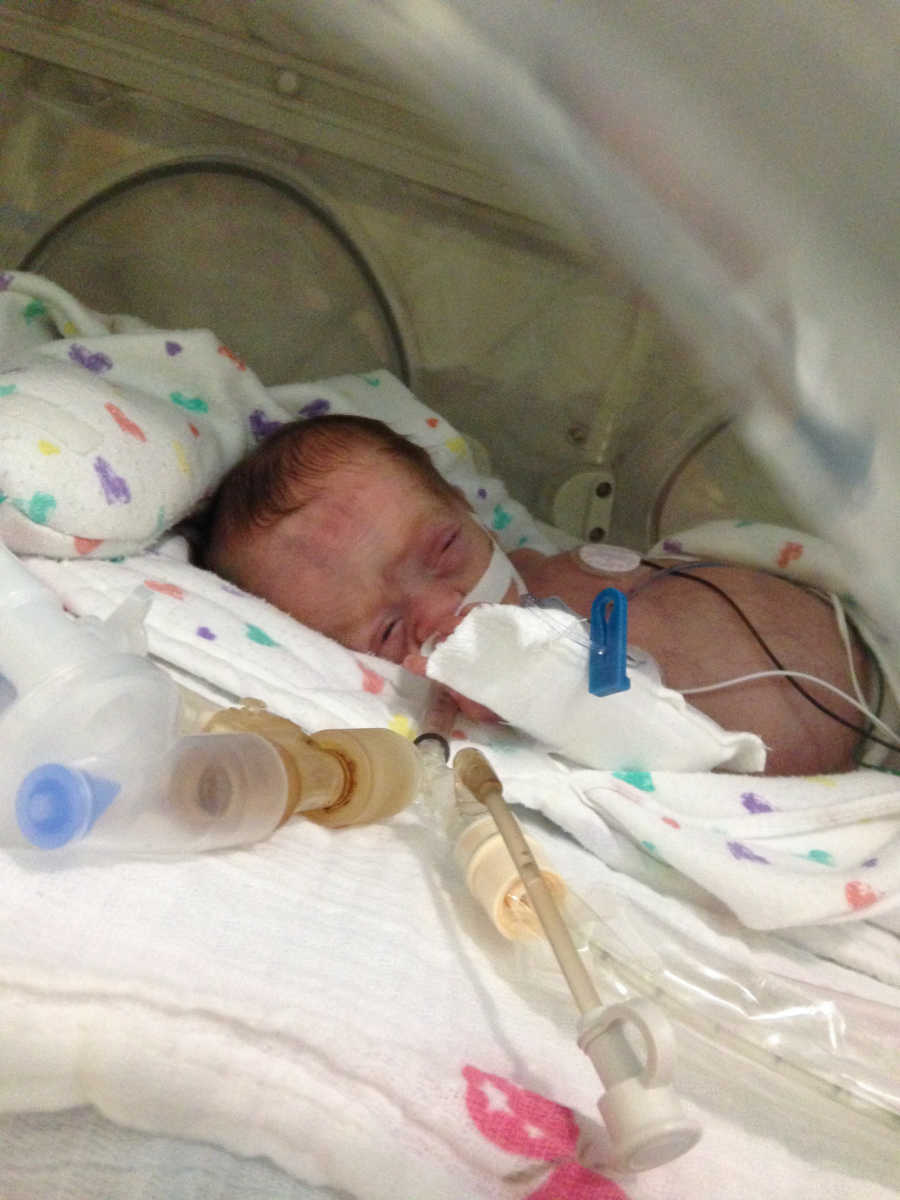
That day, Addie had contracted necrotizing enterocolitis (NEC), a life-threatening infection that causes intestinal tissue to die. It’s the main reason premature babies die in the NICU. 50% of those affected don’t survive. But Addie did. With mascara-stained tears streaming down my cheek, I finally held her, after 7 days of worrying whether she’d still be with us. Whenever I revisit this moment in my brain, I hold on to her a little tighter. After 114 days, we finally got to take our baby home. We naively thought again the worst was behind us.
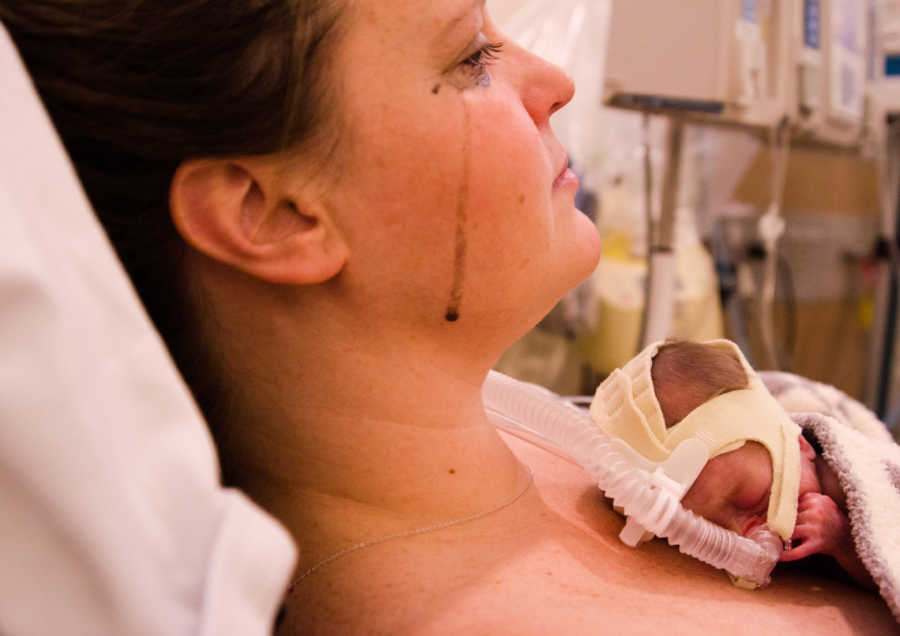
Our story is of a child who spent most of the first two years of her life behind the doors of a hospital. It’s about the kid who’s had an intestinal stricture, an NG-tube, malrotation and volvulus, a G-tube, Nissen, a GJ-tube, and a Broviac catheter. It’s about the child who needs two hands to count all her surgeries. It’s hard to summarize two years of hospital life in a neatly wrapped bit of prose, but the moment that is most prominently burned into my brain is the time we almost lost her…again.
After weeks of being in-and-out of the hospital, being admitted, having the same treatment regimen each time, and returning home to have it all happen again, we pushed for more. She was distended, vomiting all day long, constantly crying, and literally pooping blood. Every imaginable test showed absolutely nothing that could tell us why. We pushed for more, and we got a second exploratory surgery to see what was happening with her intestines. Her GI team didn’t agree, but her surgeon did. We had a family meeting and we pushed them to look closer. In every fiber of our beings, we knew something was wrong. But we also knew that we were sending our 6 pound, 6-month-old to surgery, not knowing if we would find anything.
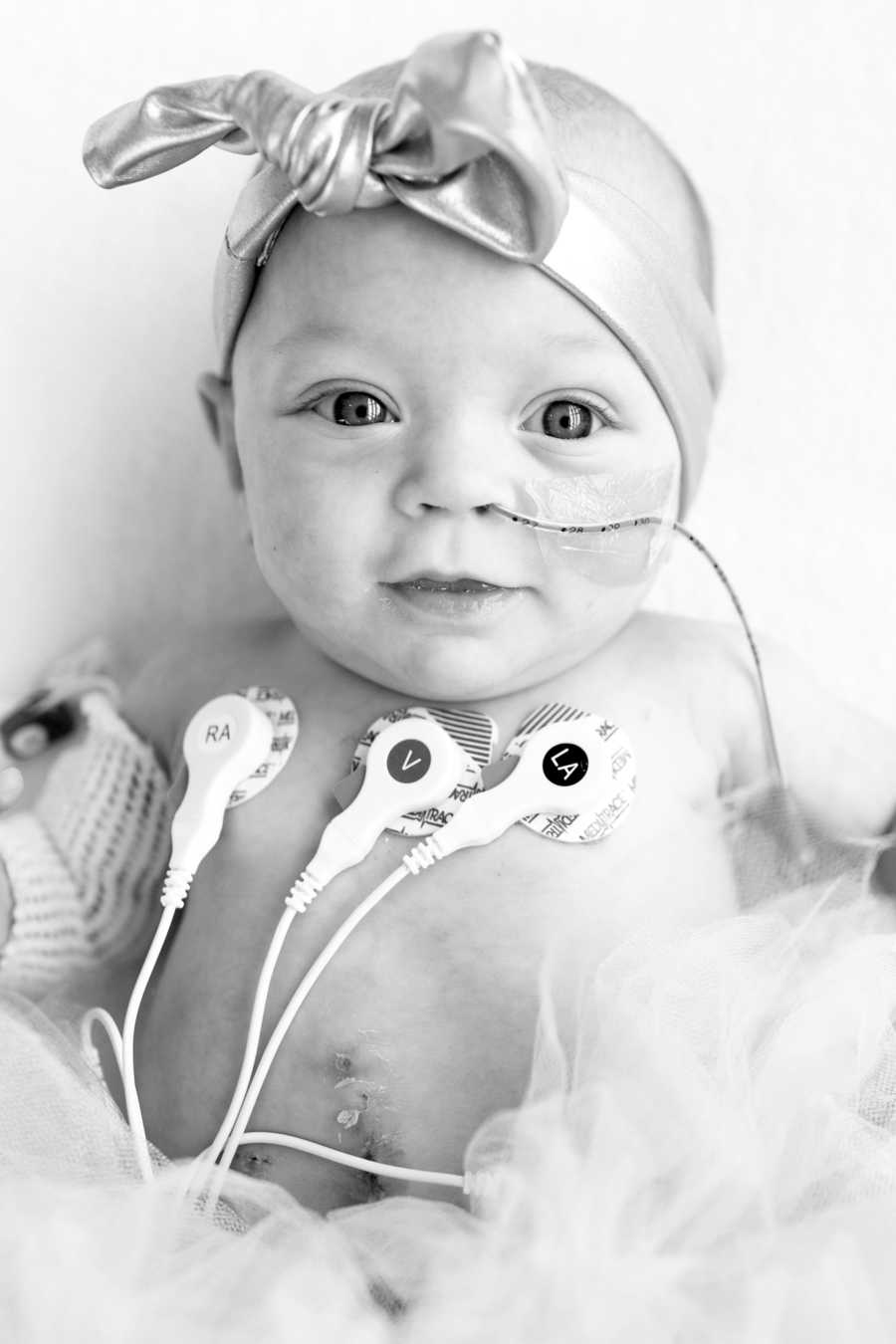
We followed our guts, and a reluctant medical team followed our lead. The surgeon called me from the OR and said, ‘I need you to come downstairs immediately, I found something.’ No other context. No other details. Just a call from the surgeon who’d found something so alarming he needed to talk while our baby was open on the operating table. I could barely see straight as I raced down the stairs to meet with him in the conference room. Her intestines were twisted around themselves like sheets in an overstuffed washing machine and blood flow as almost completely cut off. She would require major surgery. Removing her appendix, moving her secum (we didn’t even know what a secum was), pulling out her intestines and re-anchoring them down. Basically, restructuring her entire gut.
After the surgery, the surgeon came up to the room and told us how relieved he was that they went in and they’d just lost another baby to this same condition earlier in the week. Days after surgery, she turned 6 months old. She’d survived to see her half birthday. Something inside me knew even if it wasn’t going to be easy, she was meant to survive more days. Before that moment I was constantly afraid I would lose her. To this day, I still celebrate her half birthday in remembrance of the half birthday that might never have been.
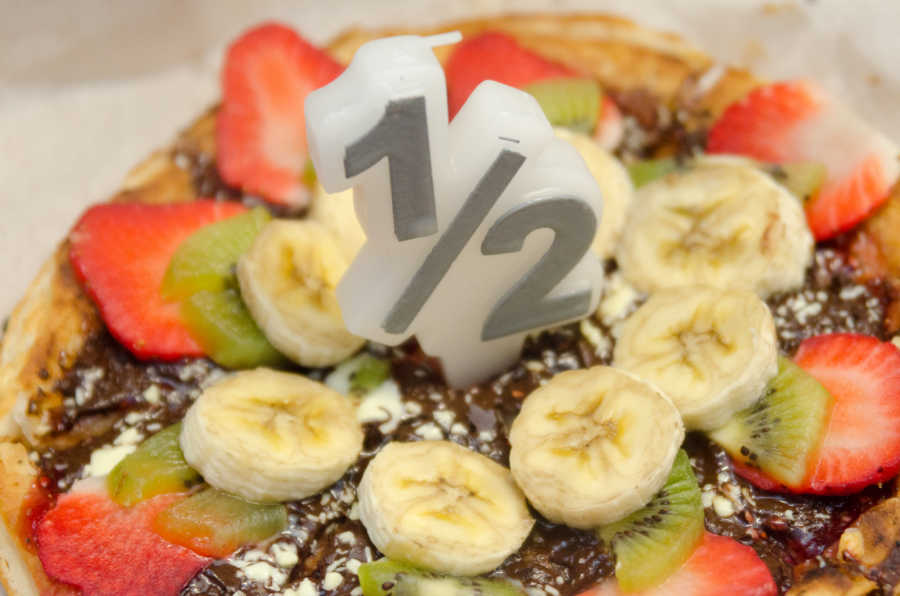
This story is about our continued journey. It’s about the damage that, even while it had been repaired, that continues to impact her to this day. It’s about the struggle with TPN. It’s about the struggle to increase feedings and gain weight. It’s about the kid who always ‘looks so good’ when the spotlight is on, but who struggles when the lights go out. It’s about invisible illness. At almost 2 years old, we FINALLY got a diagnosis. Functional Short Bowel Syndrome. Most children with SBS have lost a portion of their intestines. Although we saved all her intestines, the NEC and malrotation had taken their toll. The lights in her intestines were on, but no one was home. When she received her diagnosis, I was equal parts relieved and sad. I felt like we could finally put a name to all she was going through, but I knew it meant what she had been going through was now what she would go through.
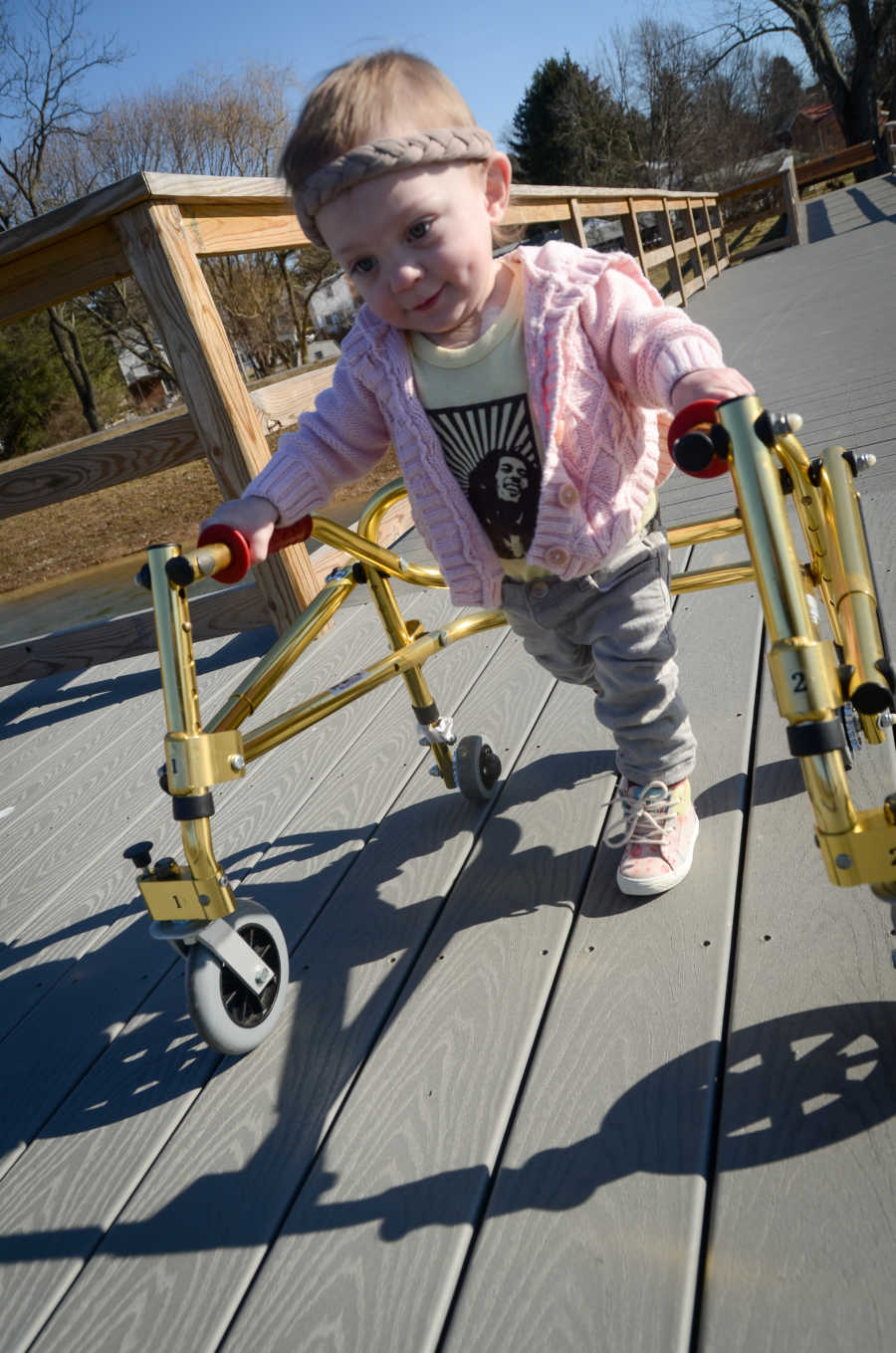
Our story is about life has been marked by daily medical regimens we continue to follow, hours of care, countless syringes, bags of additives, medicines, tube extenders, alcohol wipes, adhesive remover, Grip-Lock, Tegaderm, sterile gloves, IV 3000’s, line breaks, infections, hours of retching, feed bags, pump alarms, sheet changings, poop explosions, cans of scientifically engineered food, and everything else in between.
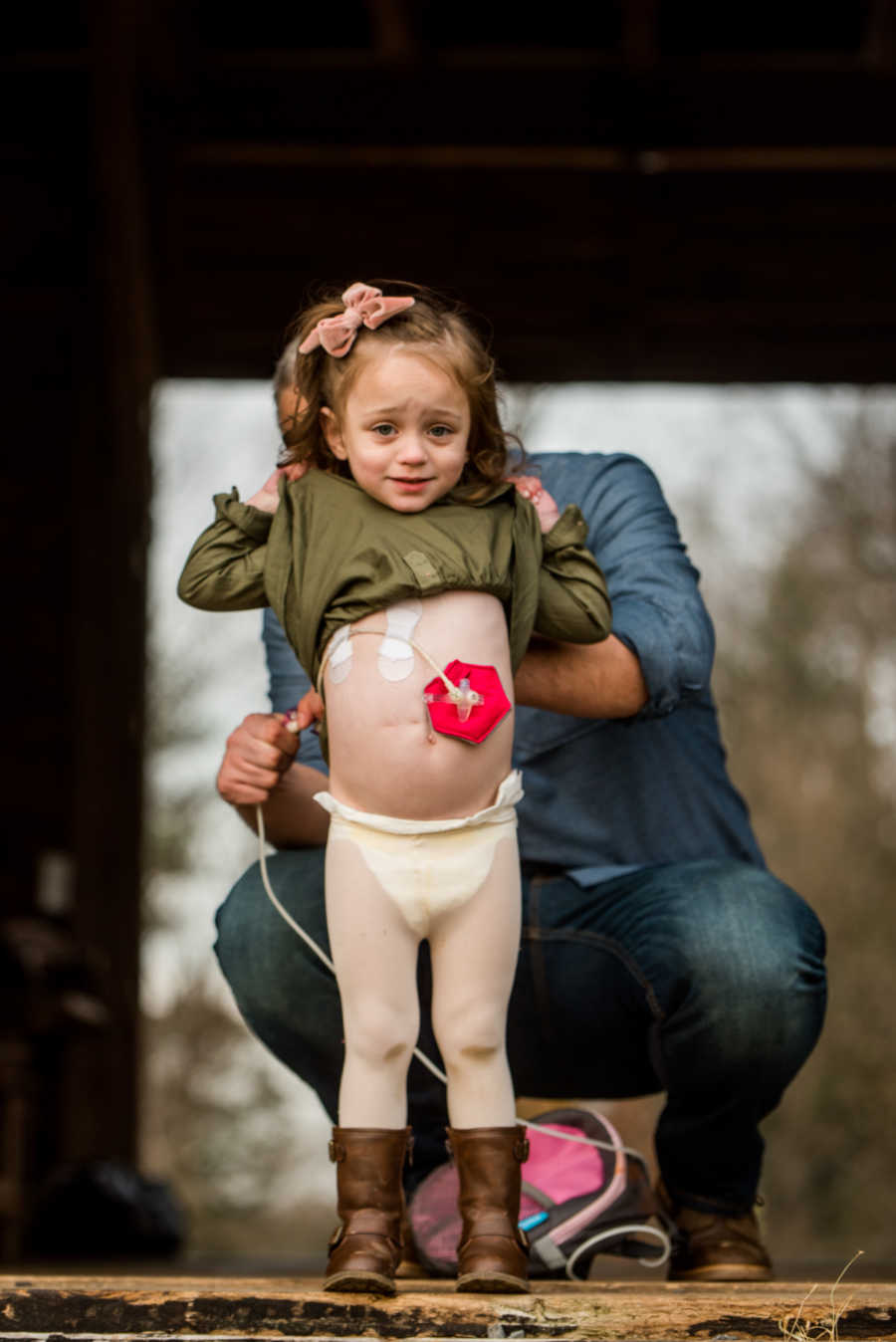
Our story is about the resilience and strength of a tiny human with a heart of gold, the drive of an Olympian, and the fight of an army of Dothraki. This story is about the tiny, 1 pound 8 ounce, 12-inch human that was born against all odds. Our medical and early intervention is not quite behind us. She still has a feeding tube, travels to Boston for medical care, and gets several therapies every week (feeding therapy, occupational therapy, psychologist, etc.) and still goes to a typical preschool. Given all she has been through, her spirit is pure joy, she’s incredibly empathetic, friendly to everyone, touches anyone who spends enough time with her, is sensitive, emotional, loves nature, her family and dog, and all things Disney. She is also preparing to be a big sister as we are waiting for the next member of our family via adoption. I am amazed by my daughter. She is a warrior, the strongest person I know, and I’m proud to say I gave birth to my hero.
It’s a story that continues to this day. Where struggles are daily. Where we take one step forward and two steps back. Where we are making progress, but oh so slowly, and oh so steadily. Where we continue to be amazed by the 4-year old spirit that was forged in the fire. We finally got the family we wished for, and while it may not have been borne traditionally, we are stronger for it. She is stronger for it. We will continue to persevere, grow, and love together.”
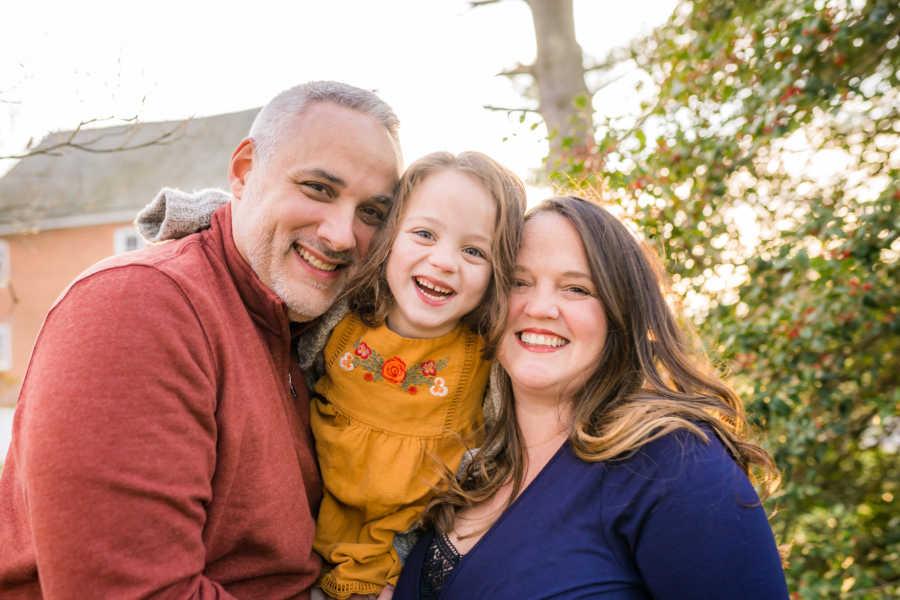
This story was submitted to Love What Matters by Stephanie Durfee. You can follow her journey on Instagram. Do you have a similar experience? We’d like to hear your important journey. Submit your own story here, and be sure to subscribe to our free email newsletter for our best stories.
Read more compelling stories of children fighting rare conditions:
Do you know someone who could benefit from this story? SHARE this story on Facebook with your friends and family.

